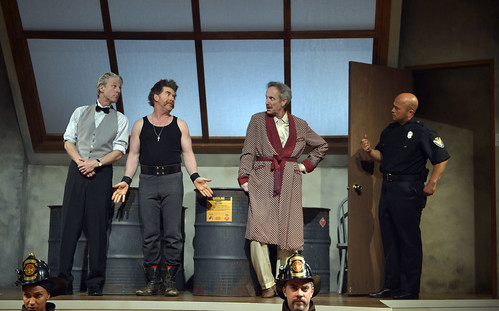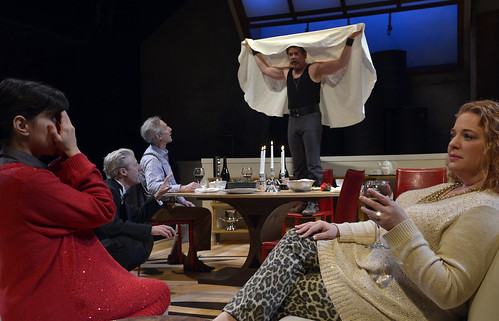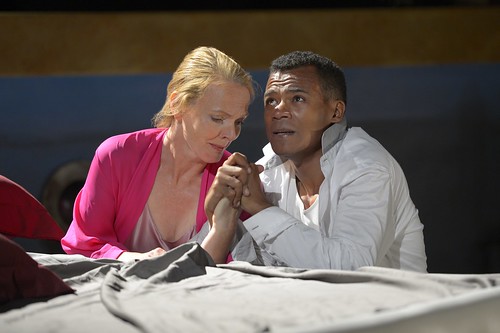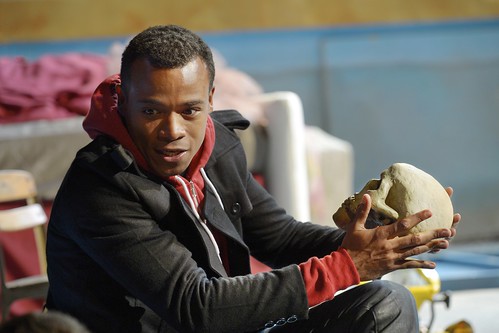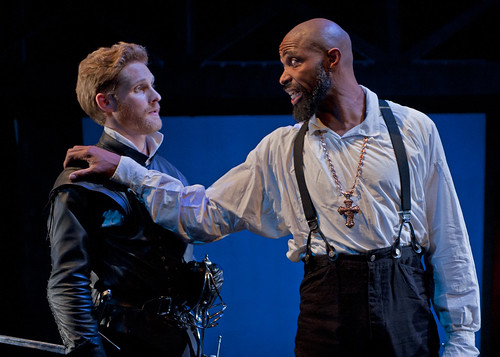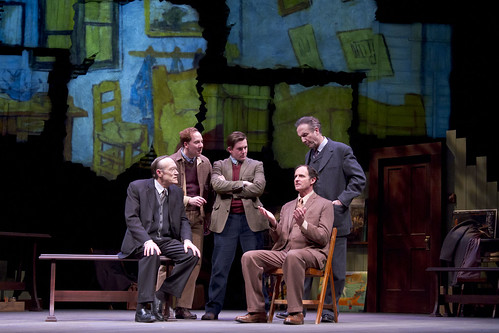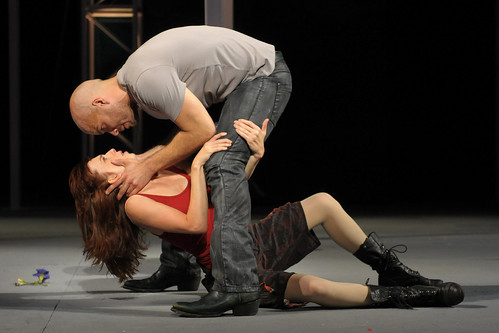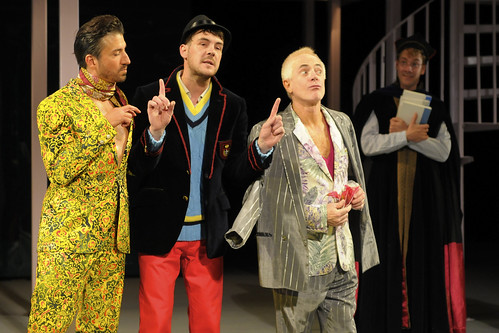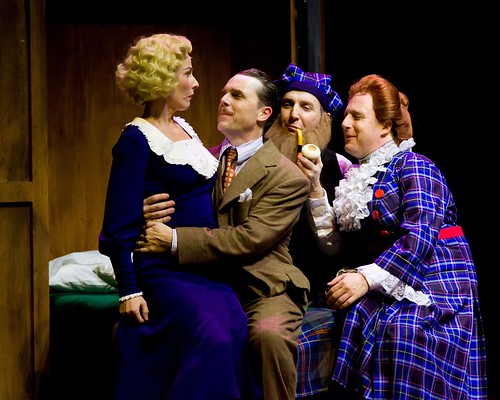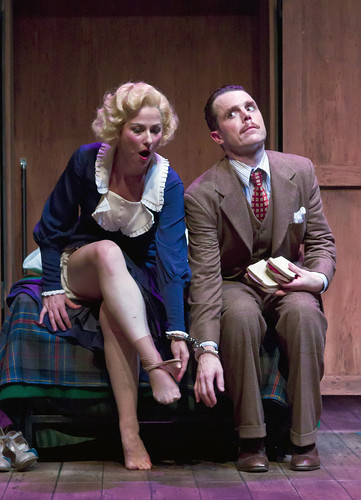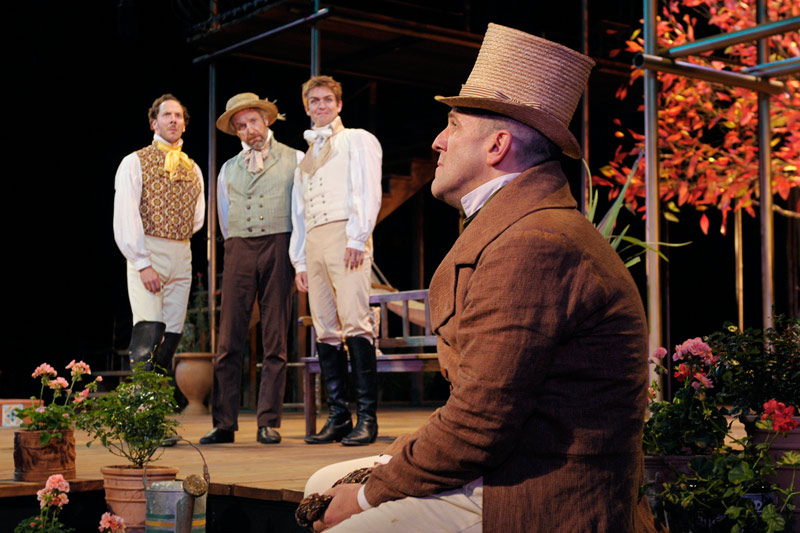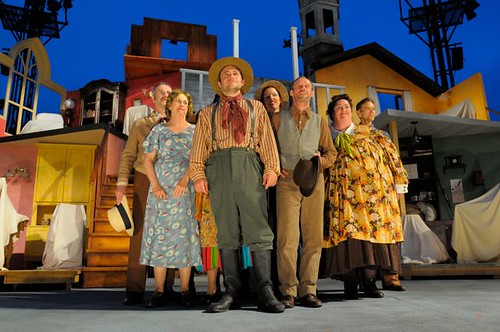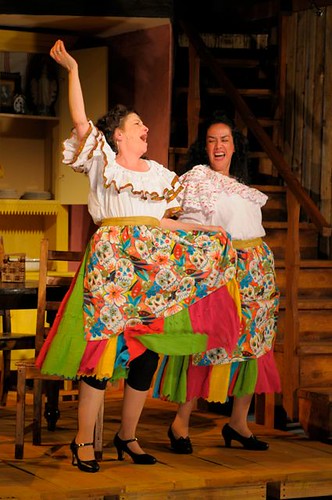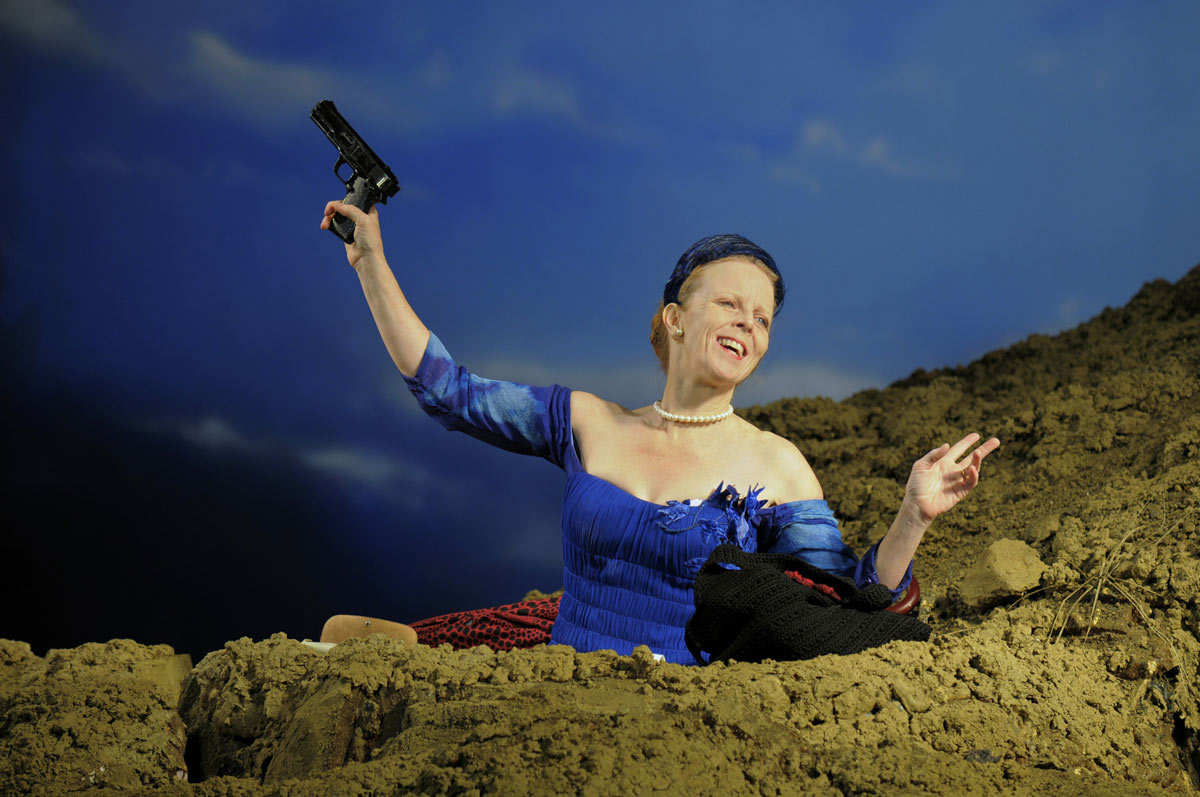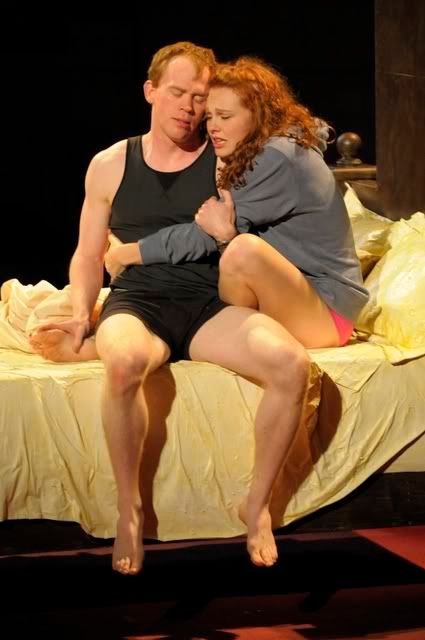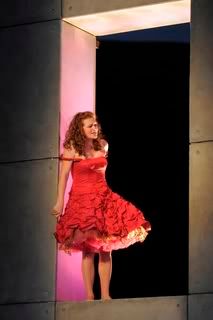Firefighters (front left to right, Tristan Cunningham and Kevin Clark) observe as a policeman (Michael Uy Kelly, right) pays a surprise visit to the attic of Mr. Biedermann (Dan Hiatt, center), while the arsonists (Tim Kniffin, far left, and Michael Ray Wisely) play innocent in front of the drums full of gasoline in the Aurora Theatre Company production of The Arsonists. Below: Babette (Gwen Loeb, right) and Anna (Dina Percia, left) can’t bear to watch as Mr. Biedermann (Dan Hiatt, seated at table) plays a game with the arsonists (Tim Kniffin, kneeling) and Michael Ray Wisely (standing on chair) during a tense dinner party. Photos by David Allen
My first encounter with Swiss playwright Max Frisch was in college when my Drama as Literature class read his Biedermann and the Firebugs, a 1953 radio play that was expanded into a stage play in 1958. The subtitle of that version was the clunky “a learning-play without a lesson.” Alistair Beaton delivered a new translation to London’s Royal Court Theatre in 2007 with the much zippier title – The Arsonists – and a subtitle: “a moral play without a moral.” Happily, that’s the version now on stage at Berkeley’s Aurora Theatre Company under the customarily energetic direction of Mark Jackson.
The time is now, and Frisch’s take on the wishy-washy morals of the privileged middle class is as astute as ever. Dan Hiatt is Biedermann, a successful businessman and purveyor of a hair rejuvenator that gives baldies nothing but false hope. He lives a lovely life in a lovely home (the sleek and elegant set is by Nina Ball and has more than a few menacing surprises tucked away in its loveliness) with his lovely wife, Babette (Gwen Loeb sounding like Lovey Howell from “Gilligan’s Island”) and hardworking maid, Anna (Dina Percia).
There’s tension in the air because the city is besieged by arsonists who randomly burn down chunks of neighborhoods for no apparent reason. “Hang the lot of ’em,” the fired-up Biedermann says. He looks and talks the part of a man of conscience, but when push comes to blazing shove, he doesn’t have much moral character at all. Possessing such a thing, it seems, might jeopardize one’s standing in the community, which might adversely affect one’s business and might decimate the lovely life by degrees.
So when the sweet-talking arsonists come a-calling, Biedermann isn’t exactly a righteous force of defiance. First comes Schmitz, a former circus wrestler (Michael Ray Wisely with wild hair and flashing eyes) who insinuates himself into the household while demonstrating his affection for a good Beaujolais, ementall cheese and a 3 ½-minute egg. Once firmly ensconced in Biedermann’s attic, Schmitz invites his comrade, Eisenring (Tin Kniffin) to join him, much to the dismay of the sputtering Biedermann.
Biedermann willfully believes these men NOT to be arsonists, despite the warnings of a deadpan Greek chorus dressed as firefighters (Kevin Clarke, Tristan Cunningham and Michael Uy Kelly), that’s where the comedy comes from. Here’s a stand-up member of society who wants to believe he’s not aiding and abetting arsonists and yet he is. He knows he is and still he tries to be Mr. Nice Guy, protecting his image and not causing a stir. At the apex of the play’s biting absurdity, the arsonist’s find themselves without a match, so Biedermann gives them a whole box.
Jackson’s swift, 85-minute production punches the laughs without ever losing Frisch’s sharp edges. Hiatt is a riot as a man so caught up in appearances and mores that he can’t behave as a moral human being, even though that’s exactly what he thinks he is. Being good, he well knows, is very different than being good natured, but that’s about as far as he’s willing to go. Kniffin and Wisely are deliciously demented as the firebugs who do what they do for no other reason than they like it. They are terrorists without affiliation, and that, amid all the chuckles and middle-class bashing, is truly terrifying. Maintaining the status quo can have dire moral consequences, not to mention mortal explosions.
FOR MORE INFORMATION
Mark Jackson’s The Arsonists continues through May 12 at the Aurora Theatre Company, 2081 Shattuck Ave., Berkeley. Tickets are $32-$50. Call 510-843-4822 or visit www.auroratheatre.org.

